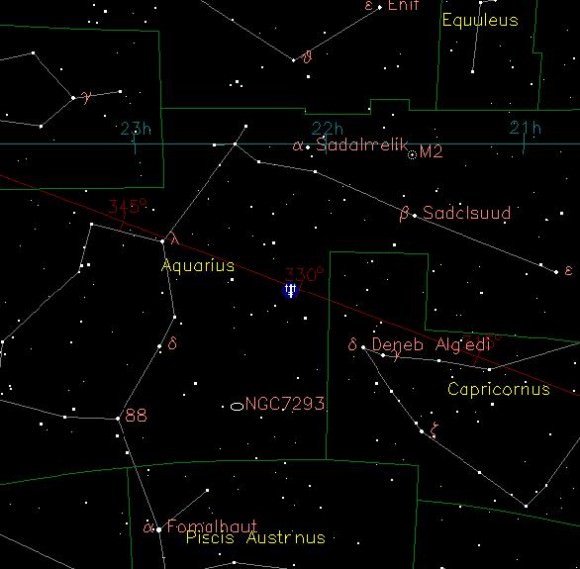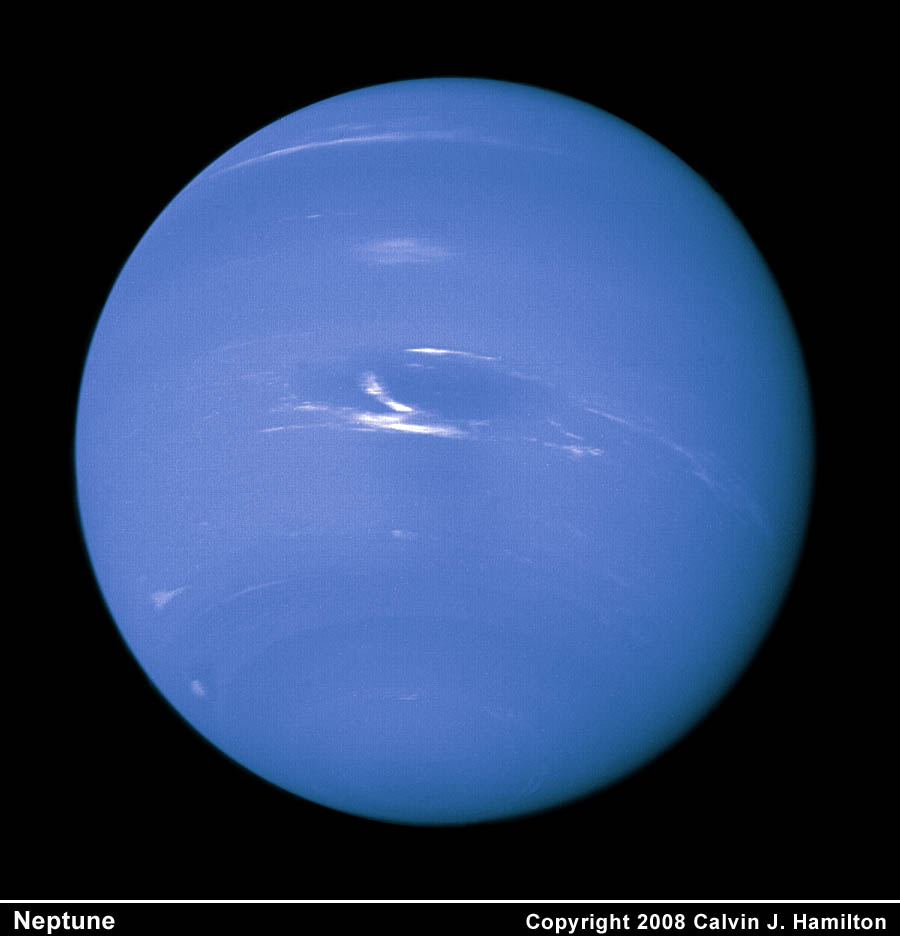Happy Anniversary, Neptune!
Posted: Mon Jul 11, 2011 7:46 pm
http://www.universetoday.com/87392/happy-anniversary-neptune/#more-87392 wrote:
Happy Anniversary, Neptune!
by Tammy Plotner on July 11, 2011
<<Today, July 11, 2011 marks the first full orbit of the planet Neptune since its discovery on the night of September 23-24, 1846. But there’s a lot more to learn about this anniversary than just the date. Step inside and let’s find out…
Pinpointing Neptune is a wonderful story. For many years we’ve been taught that the discovery of Neptune was done by mathematical calculations. This came about in 1821 when Alexis Bouvard was publishing his findings for Uranus and noticed a gravitational perturbation. This led him to hypothesize an unknown body was crossing the path. Enter miscommunications, politics and astronomer John Adams…
“It is more likely that Adams realised that his proposed orbits were moving ever closer to a “forbidden” zone of resonance.” says Brian Sheen of Roseland Observatory. “Uranus orbits in 84 years, Neptune in 165, nearly a 2:1 resonance, this brings about much greater perturbations than were being measured. In fact the mid 19th century is a quiet period and much bigger swings are evident now.”
In 1843 John Couch Adams used the data Bouvard proposed to begin working on a proposed orbit, but it would be several years later before Urbain Le Verrier verified its existence through physical observation – at the same time as Johann Gottfried Galle. Says Sheen; “It is often said that Adams never published his results. In fact a published paper was printed by November 1846 and appeared in the 1851 Nautical Almanack published in 1847.”
Unknown to both at the time – and in a great twist of irony – Galileo had actually observed Neptune on December 28, 1612, and again on January 27, 1613, but didn’t realize it was a planet. Small wonder he thought it was a fixed star, because as luck would have it, Neptune turned retrograde at the same time as his first observation! But Galileo was a great observer and made drawings of his find. Given all that we know today, it’s pretty astonishing his limited equipment was able to perceive the blue planet, let alone realize its minor movement against the ecliptic meant something. After all, the very concept of the ecliptic plane was new!
“It has been known for several decades that this unknown star was actually the planet Neptune,” says University of Melbourne physicist, David Jamieson. “Computer simulations show the precision of his observations revealing that Neptune would have looked just like a faint star almost exactly where Galileo observed it.”But we digress…Today, July 11 would be the anniversary of Neptune’s first full barycentric orbit – a celebration that has taken us 164.79 years of waiting to celebrate. Tomorrow, July 12 is the anniversary of Neptune’s heliocentric completion. However, don’t expect Neptune to be in the exact same position as it was on either date. While over 150 years is but a wink in the cosmic eye, it is certainly more than enough time for our solar system to have shifted That having been over simply said, what will happen at 21:48 and 24.6 seconds UT on July 11 is that Neptune will return to its exact longitudinal position in respect to the invariable plane. Is it close to its discovery point? Well, in a sense, yes. It will be within 1.5 arc seconds of its 1846 location relative to the barycentre. In visual terms, that’s just a whisker.
As you can see, it’s going to be quite late at night before Neptune has well cleared the horizon – but what an opportunity! Because of its small size, I recommend using a telescope for stability and printing a map from a planetarium program for more detailed star fields. You can expect to see a slightly blue colored disk that averages about magnitude 8 (well within reach of smaller scopes). If you have never seen Neptune before, compare it in your mind’s eye to one of Jupiter’s moons and you’ll be able to pick it out of starry background much easier.
Good luck, clear skies and happy anniversary Neptune! Many thanks to Brian Sheen of Roseland Observatory!>>
http://astrobob.areavoices.com/?blog=78068 wrote: Hot on the trail of the asteroid Vesta
Posted on July 1, 2011 by astrobobWow, Vesta is finally coming into focus!
While I love watching Vesta come ever hither through Dawn’s eyes, you can also see it live in the flesh in the early morning sky. All you need is a pair of binoculars and a good map. You’re on your own with the binoculars, but I’m happy to share a map for how to find the asteroid.
Vesta is currently magnitude 6.3 – near the naked eye limit for sky watchers who have access to a dark location – and located in the eastern half of Capricornus the Sea Goat, a constellation that looks like a saggy triangle. While Capricornus is not a particularly bright grouping, you can locate it easily enough by using the Summer Triangle. Shoot a line from Altair at the bottom of the Summer Triangle to the pair of stars Alpha and Beta Capricorni. A little more than one outstretched 'fist' to their left, you'll see the pair of Delta and Gamma. Once there, use the detailed map created with Stellarium.
Now for the hard part. Vesta doesn’t get high enough to see with ease until around 1 a.m. local time in early July. Viewing circumstances improve with time. By mid-month, you can catch it around midnight, and in early August, when Vesta is brightest and closest, it’ll be up at the end of the 10 o’clock news.
Through binoculars Vesta looks exactly like a ‘star’ that slowly creeps to the southwest night by night through the stars of the Sea Goat. Its appearance through a telescope is identical. That’s why these small bodies were named ‘asteroids’, from the Greek for ‘star-like’.
In early August, it will have brightened to magnitude 5.7 and be fairly easy to see from a dark sky if you know exactly where to look. It’s always fun to connect to a big time space mission like Dawn by experiencing it with your own eyes.>>










